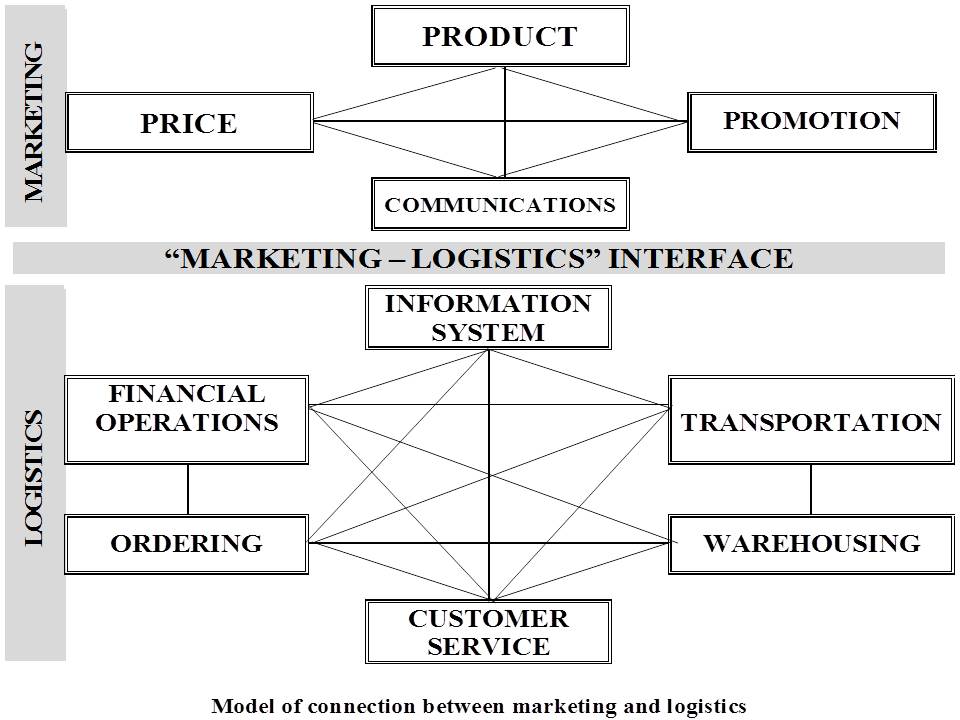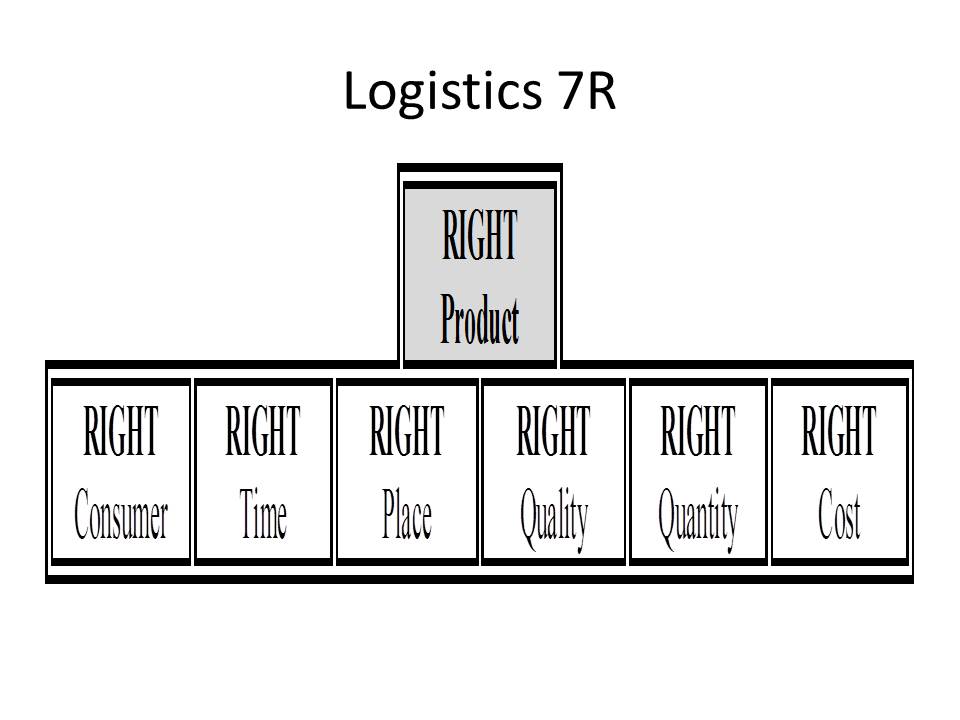International Logistics Mix
From Supply Chain Management Encyclopedia
| Line 6: | Line 6: | ||
* the ''distribution channel'', through which the good moves physically; and | * the ''distribution channel'', through which the good moves physically; and | ||
* the ''documentation/communications channel''. | * the ''documentation/communications channel''. | ||
| + | |||
| + | This number and complexity of factors influencing international logistics remind of the situation in marketing science/practices before the time the marketing mix concept was coined by Nail Borden <ref>Borden, Neil H. (1965). The Concept of the Marketing Mix. / In: Science in marketing / Schwartz, G. Wiley </ref>and then formatted in the frame of the well-known 4P paradigm by Jerome McCarthy <ref> McCarthy, J. (1975) Basic Marketing: A Managerial Approach, Irwin, Inc.</ref>. Taking into account that the [[Target Function of International Logistics]] could be defined as matching the components of home logistics mix with logistically significant dimensions (variables) of neighboring national marketing environment to be crossed by a moving item of the global supply chain one could be referenced to the “prismatic model” in the article [[Subject of International Logistics]] to receive understanding the fields of possible mismatching/disruptions where international logistics functions are to be researched and adjusted . While defining this target function, the concept of international logistics mix occupies the central position just as the marketing mix concept in adapting product to market. In the present case, the marketing approach appeared the universal one as for many of other business disciplines. Genetically, such functional proximity between logistic mix and marketing mix (See the “Model of connection between concepts of marketing mix and logistics mix below) could be explained by the well-known fact that the main category of marketing is presented by an exchange<ref> Cunningham M. H. Exchange and Marketing Theory // Proceedings of the Southern Marketing Association, 1988. </ref> and the logistics serves the exchange too. Any convenient understanding of the logistics mix content is not revealed. However, one names four fields of this mix <ref> Lai, K.-H. and Cheng, T.C.E. (2009) Just-in-Time Logistics, Gower, Farnham, UK –p.108.</ref>, namely: customer services, order processing, inventory management, and transportation. Defining the international marketing mix is in progress now <ref> Cherenkov V.I. International Logistics Management: From Subject to Lean Syllabus and Effective Teaching – International Conference “GSOM Emerging Markets Conference: Business and Government Perspectives” (Graduate School of Management, SPSU, St. Petersburg, October, 16-17, 2014) - http://www.gsom.spbu.ru/images/a9/ebook_gsom_emerging_markets_conference_business_and_government_perspectives.pdf </ref>. | ||
Revision as of 12:51, 14 November 2014
Russian: Международный логистик-микс
Effectiveness and efficiency of international logistics management depends sine qua non on a set of well-arranged and well-performed logistics functions, such as[1]: customer service; demand forecasting; documentation flow; handling returns; inter-plant movements; inventory management (inbound, plant, and outbound); parts/service support; materials handling; order processing; plant and warehouse site selection; production scheduling; protective packaging; purchasing; salvage scrap disposal; traffic management; and warehouse and distribution center management. Not all of these functions are equally specific for the international logistics management and some of them (more specific in this sense) are highlighted in italics herein. The case of international logistics – due to such simple and the most important factor of international trade as crossing borders – demands to add to the list of italicized items above some other items defined by the sense and scope of the three-fold international logistics channel[2]:
- the transaction channel, which handles the buying, selling and collection of payment;
- the distribution channel, through which the good moves physically; and
- the documentation/communications channel.
This number and complexity of factors influencing international logistics remind of the situation in marketing science/practices before the time the marketing mix concept was coined by Nail Borden [3]and then formatted in the frame of the well-known 4P paradigm by Jerome McCarthy [4]. Taking into account that the Target Function of International Logistics could be defined as matching the components of home logistics mix with logistically significant dimensions (variables) of neighboring national marketing environment to be crossed by a moving item of the global supply chain one could be referenced to the “prismatic model” in the article Subject of International Logistics to receive understanding the fields of possible mismatching/disruptions where international logistics functions are to be researched and adjusted . While defining this target function, the concept of international logistics mix occupies the central position just as the marketing mix concept in adapting product to market. In the present case, the marketing approach appeared the universal one as for many of other business disciplines. Genetically, such functional proximity between logistic mix and marketing mix (See the “Model of connection between concepts of marketing mix and logistics mix below) could be explained by the well-known fact that the main category of marketing is presented by an exchange[5] and the logistics serves the exchange too. Any convenient understanding of the logistics mix content is not revealed. However, one names four fields of this mix [6], namely: customer services, order processing, inventory management, and transportation. Defining the international marketing mix is in progress now [7].
Genetic Connection between Concepts of Marketing Mix and Logistics Mix[8]
References
- ↑ Encyclopedia Britannica (1993), Chicago, Encyclopedia Britannica, Inc., Vol. 28
- ↑ Wood, D.F., Barone, A.P., Murphy,P.R., and Wardlow, D.L. (2002), International Logistics, AMACOM, a division of American Management Association, New York, etc. – p.7.
- ↑ Borden, Neil H. (1965). The Concept of the Marketing Mix. / In: Science in marketing / Schwartz, G. Wiley
- ↑ McCarthy, J. (1975) Basic Marketing: A Managerial Approach, Irwin, Inc.
- ↑ Cunningham M. H. Exchange and Marketing Theory // Proceedings of the Southern Marketing Association, 1988.
- ↑ Lai, K.-H. and Cheng, T.C.E. (2009) Just-in-Time Logistics, Gower, Farnham, UK –p.108.
- ↑ Cherenkov V.I. International Logistics Management: From Subject to Lean Syllabus and Effective Teaching – International Conference “GSOM Emerging Markets Conference: Business and Government Perspectives” (Graduate School of Management, SPSU, St. Petersburg, October, 16-17, 2014) - http://www.gsom.spbu.ru/images/a9/ebook_gsom_emerging_markets_conference_business_and_government_perspectives.pdf
- ↑ The basement for building this model is extracted from the following source - Barcik1, R., and Jakubiec, M. (2013) – Marketing Logistics -p.7., Fig.1. - http://www.slu.cz/opf/cz/informace/acta-academica-karviniensia/casopisy-aak/aak-rocnik-2013/docs-4-2013/Barcik_Jakubiec.pdf






